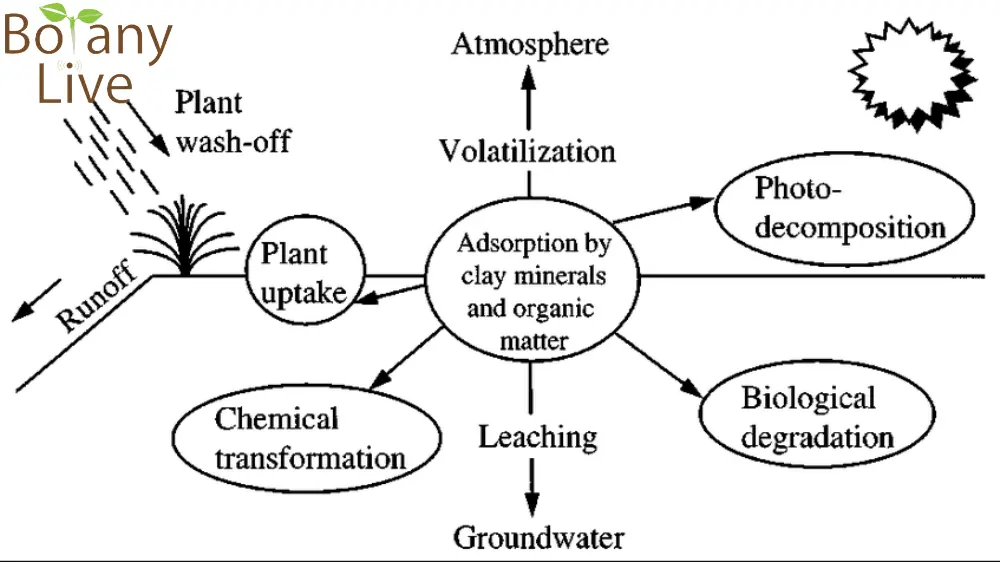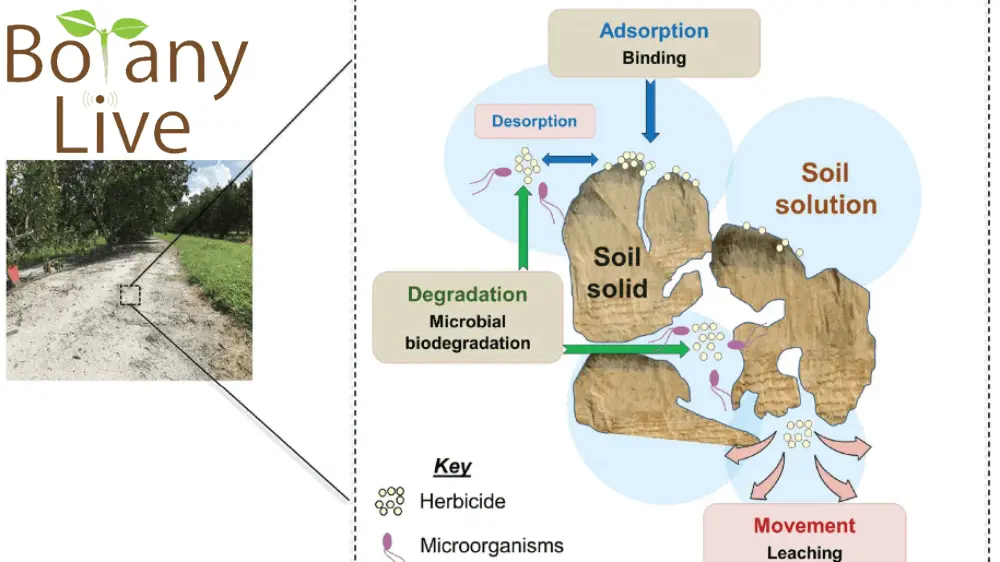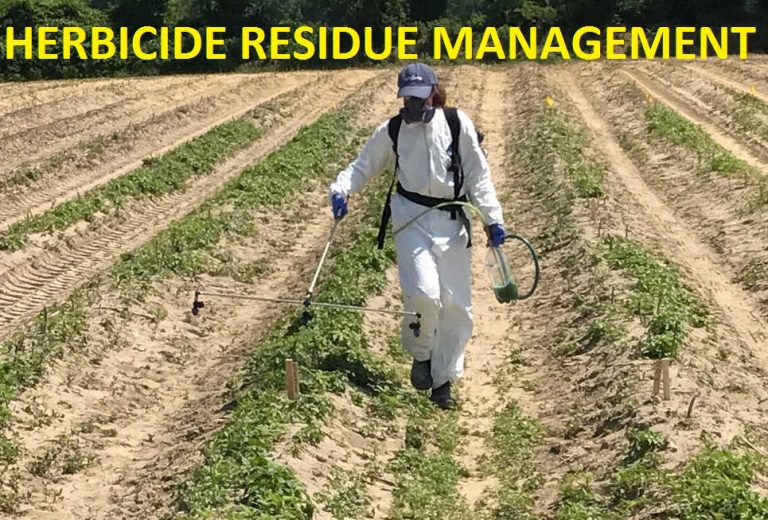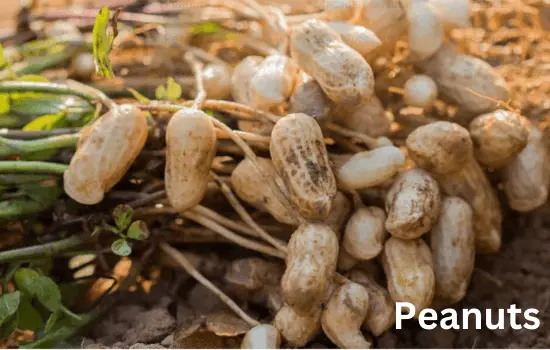Herbicide Movement in Soil, Plants, and Atmosphere
The quantity of herbicide that remains in the soil after its mission is done is called “residue”. According to WHO, “any substance found in food or fodder resulting from the use of pesticide and includes any specified derivative, metabolite, by-product, an impurity that is toxic, is called residue”. Herbicide Movement in soil, atmosphere, and plants is of great concern. Different factors affect herbicide carryover in soil, plant, and the atmosphere.
Let’s discuss all this here.
These are chemicals that inhibit or destroy plants or more specifically weeds. Chemicals like glyphosate, and pendimethalin are termed as the best weed killers. These chemicals are a vital part of Integrated Weed Management (IWM) programs. The widespread use of chemicals (herbicides) for weed control has undoubtedly increased crop production but their extensive and indiscriminate use may result in phytotoxicity and adverse effects on succeeding crops and non-targeted areas [1].
They are applied to the soil (pre-emergence) and to the growing weeds (post-emergence) to control weeds. Pre-emergence type controls weeds at seeds, root shoot emergence, and seedling emergence stage through the soil e.g. pendimethalin. Consumption of herbicides is higher (44%) than fungicides, insecticides, and other chemicals [1].
Herbicide Movement as Residues
The problem of herbicidal residue contamination is higher mainly in the case of direct application on the soil as pre-emergence or pre-planting than in other forms [2]. In both cases, residues may remain in the soil or the crop for a longer period until their purpose is served. They can move away from the target area and can damage plants and animals. This residue might be subjected to adsorption, absorption, leaching, degradation, chemical or microbial degradation, photodegradation, volatilization, or runoff [1]. The bounded form is not available for degradation and can pollute the ecosystem to great extent. The time for which a residue remains active is called “residual life” or “soil persistence”.
An ideal herbicide should persist until the purpose is served but now long enough to limit the growth of the subsequent crop. The persistence in the soil varies depending upon herbicidal properties themselves, soil factors, and climatic conditions.
Herbicides that are persistent in the soil belong to uracils, phenyl ureas, sulfonylureas, triazines, isoxazolidiones, imidazolinones, dinitroanilines, and some other plant growth regulators (PGRs) (Table 1).
| Uracil | Phenylureas | Sulfonylureas | Triazines | Imadazolinones |
| Terbacil | Diuron Tebuthiuron | Chlorimuron Metsulfuron Nicosulfuron Prosulfuron | Atrazine Simazine | Imazapyr Imazaquin |
These are undesirable as they may;
- Injure current and even following crops.
- Carried to succeeding crop products.
- Buildup as a result of multiple treatments.
- Adversely affect the growth of soil microbes.
The term ‘residue’ applies to a number of chemicals that have a long-lasting activity in the soil. Residual effect of herbicide rely on moisture and microbial activity to break down. If the growing season is drier, the chemicals applied in the earlier seasons could still have significant residues in the soil and may affect the following year’s crops.
Soil pH also limits their persistence in soil.
- Imidazolinones will be more persistent in acidic soils
- Sulphonyl ureas on alkaline soils.
- Triazines are slightly more persistent on alkaline soil.
Herbicides have the capacity to move in the targeted (weeds) and non-targeted plants, in the atmosphere, and in the soil underneath or away from the targeted area. They also a lot of trouble to the animals when acting as carryover. Herbicide Movement can be in different forms in different mediums. You can manage the movement of herbicide in plant, soil and water.
Here we will discuss;
- Herbicide Movement in Plants
- Herbicide Movement in Atmosphere
- Herbicide Movement in Soil
How do Herbicides Move in Plants?
When a farmer or researcher applies selective herbicide on a crop infested by weeds. Herbicide Movement in the Crop plants and resistant weeds takes place as they absorb a certain proportion of this chemical dose rather than the targeted weeds. These plants and weeds can metabolize the chemicals before they can cause damage. Thus, plants and resistant weeds are helpful in removing a certain fraction from the environment and detoxifying it. Nonselective herbicides like round-up, paraquat, and glyphosate kill all the targeted vegetation. They are considered the best weed killers.

Susceptible weeds are not able to metabolize the applied chemicals at all or at least quickly enough to be safe and are killed. Their cells exposed to the chemical die and rupture releasing many oxidizing enzymes. These oxidizing enzymes destroy plant tissue and chemical are applied as well. Later, this fraction is also removed from the environment.
How do Herbicides move in the Atmosphere?
Herbicide drifting is the phenomenon by which fine droplets get into the atmosphere. This drifting depends upon the volatility, nozzle of the sprayer, wind velocity, and the method used for spraying. There are three different forms of drifting, viz;
- Vapour drift
- Droplet drift
- Particle drift
From all three mentioned above about the herbicide movement, droplet drift is the main cause of off-target damage. Large droplets fall onto the targeted area while small droplets may remain suspended in the air and fall off-side.
Almost all the chemicals have the potential to evaporate from the surface of plants or soil e.g. Trifluralin and the volatile ester formulations of 2,4-D. However, this danger is short-lived as UV light has sufficient energy to dislocate some of the bonds between its constituent atoms of herbicides. Rates of breakdown for any compound will depend upon the intensity of sunlight.
How do Herbicides Move in soil?
- Bare soil after cultivation may contain residues of chemicals. Bare soil is more susceptible to wind and water erosion. If wind or water moves this soil, any residue of herbicide will also move and may damage desirable vegetation wherever it settles.
- As rainwater moves down the soil profile from the surface, residue in the soil will move with it to some extent contaminating groundwater [3]. This leaching is a dynamic process. Herbicide alternates between mobile (being dissolved in water) and immobile (being absorbed onto soil particles) phases. The rate of movement of any herbicide down the soil profile, therefore, depends on its solubility in water and the strength with which it absorbs onto soil particles [4].
- Later in the season, when net water movement is back toward the drying surface soil. During a dry period, it is possible to have previously leached chemicals moving up from sub-soil with this reverse water flow. Intermittent drying and wetting resulted in a very high persistence of residues in the soil (e.g. Trifluralin) [5].

References:
- Sondhia S. 2014. Herbicides residues in soil, water, plants and non-targeted organisms and human health implications: an Indian perspective. Indian Journal of Weed Science 46(1): 66–85.
- Queiroz SDN, Ferracini VL, Gomes MA, Rosa MA. Comportamento do herbicida hexazinone em área de recarga do Aqüífero Guarani cultivada com cana-de-açúcar. Química Nova. 2009;32:378-381.
- Inoue MH, Santana DC, Oliveira RS Jr, Clemente RA, Dallacort R, Possamai ACS, et al. Potencial de lixiviação de herbicidas utilizados na cultura do algodão em colunas de solo. Planta Daninha. 2010;28:825-833. DOI: 10.1590/S0100-83582010000400016.
- Barman, K.K. and J.G. Varshney. 2008. Impact of herbicides on soil environment. Indian Journal of Weed Science 40 (1&2):10-17.
- Goyal MVK and Phogat VK. 2003. Persistence of trifluralin in soils under intermittent and continuous ponding condition. Pesticide Research Journal 15(2): 181-184.
For more related topics to Life Sciences
visit: www.botanylive.com
I’m Dr Qaiser Maqsood (PhD), a dedicated researcher and expert in Biological Sciences, Gardening, Bio-Diversity, Ecology, and Environmental Sciences. I’m much concerned about Environmental Pollution, Climate Change, Plantation, Gardening, and Global Warming. My passion is to explore innovative solutions in all these fields.
Be aware that we have ONLY ONE EARTH. Protect it!!



